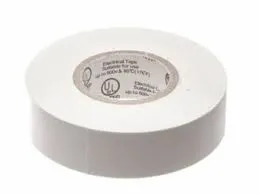Understanding Electrical Insulation Tape Pricing
Electrical insulation tape is an essential component in both electrical engineering and DIY projects. It is primarily utilized for insulating electrical wires, preventing short circuits, and ensuring that electrical components are safely insulated from moisture and other environmental factors. Given its importance, it's crucial to understand the factors that influence the pricing of electrical insulation tape.
Factors Influencing Price
1. Material Composition The type of materials used in the manufacturing of electrical insulation tape significantly affects its price. Common materials include PVC (polyvinyl chloride), rubber, and vinyl. PVC tape tends to be the most affordable option due to its widespread availability and ease of production. On the other hand, tapes made from higher-end materials, such as silicone or specialty rubber, often command higher prices because they offer superior performance in extreme temperatures and conditions.
2. Width and Thickness Electrical insulation tape comes in various widths and thicknesses, which can influence the price per roll. Wider and thicker tapes can handle more demanding applications, providing better insulation and durability. As such, these characteristics often come at a premium. For projects requiring only light-duty insulation, narrower and thinner tapes may suffice and are typically more economical.
3. Brand and Quality Like many products, the brand reputation plays a significant role in the pricing of electrical insulation tape. Renowned brands with a legacy of producing high-quality materials will often charge more for their products. In contrast, lesser-known brands may offer lower prices, but may not provide the same level of reliability or performance. When choosing insulation tape, balancing quality and price is essential to ensure safety and functionality.
electrical insulation tape price

4. Color Options Electrical insulation tape is available in a variety of colors, which may sometimes affect pricing. Standard black or white tapes are usually priced lower than specialty colored tapes. Colored electrician's tape is used for coding wires or marking certain circuits, and while it may not significantly influence price, it can create variations across different products.
5. Quantity and Packaging Buying electrical insulation tape in bulk can also reduce the overall cost per roll. Many distributors and retailers offer discounts for larger quantities, making it a more economical choice for contractors and technicians who need significant amounts of tape for their projects. Additionally, the type of packaging—single rolls versus multipacks—can further affect pricing.
6. Market Demand Economic factors, including market demand and supply chain dynamics, also influence the price of electrical insulation tape. If there’s a surge in demand due to increased construction projects or public infrastructure works, prices may rise. Moreover, fluctuations in manufacturing costs and raw material availability can impact pricing as well.
Conclusion
Understanding the pricing of electrical insulation tape involves considering various factors such as material composition, width, brand, color, and purchasing quantity. Depending on specific project needs—whether for professional electrical work or personal DIY undertakings—selecting the right type of tape can ensure effective insulation and safety.
While a higher price does not always guarantee quality, investing in reputable brands is often worthwhile to ensure long-lasting performance. As you explore options available in the market, remember to evaluate the specific requirements of your application and balance your budget with the need for quality insulation. Overall, staying informed about these pricing factors will enable you to make educated purchasing decisions for electrical insulation tape.
-
Versatility with Tape Electrical InsulationNewsJun.09,2025
-
Floor Marking Tapes For WareHouseNewsJun.09,2025
-
Enhance Your Projects with PVC Electrical TapesNewsJun.09,2025
-
Enhance Your Projects with Automotive Wiring Harness TapeNewsJun.09,2025
-
Enhance Your Automotive Fabric TapesNewsJun.09,2025
-
Enhance Electrical Projects with Cambric TapeNewsJun.09,2025
